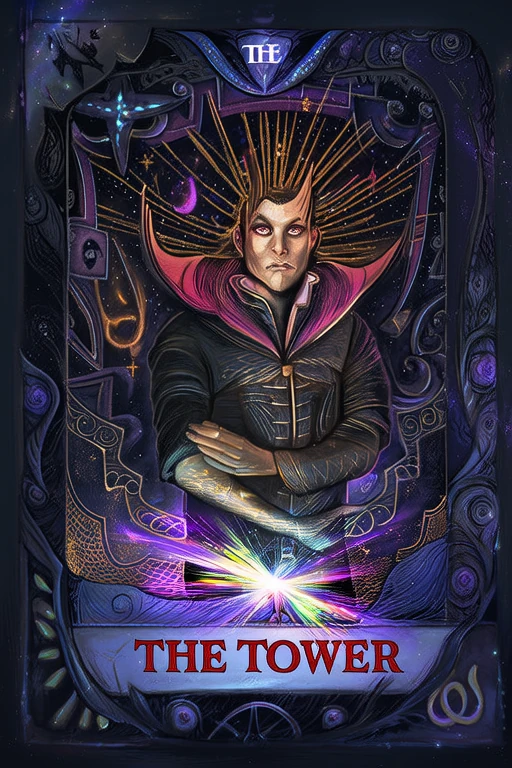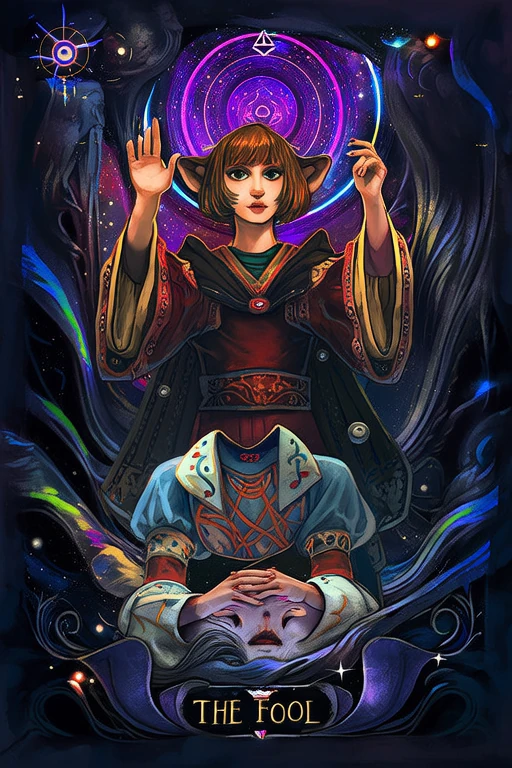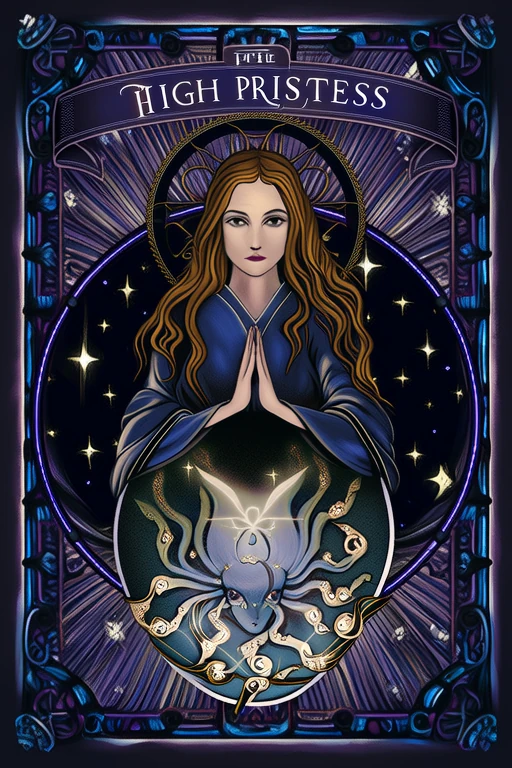
The Tower
Discover the deep meaning of The Tower with our free AI-powered tarot interpretation. Get instant, accurate readings based on advanced tarot knowledge.

Keywords
Upright Meaning
Sudden change, upheaval, chaos, revelation, awakening
Reversed Meaning
Personal transformation, fear of change, averting disaster
Full Interpretation
The Tower represents sudden change, revelation, and the destruction of false beliefs.
In-Depth Analysis
📜 Historical Background
The Tower, known as "La Maison Dieu" (The House of God) in early French decks and "Il Fulmine" (The Lightning) in Italian, is the 16th card in the Major Arcana of the Tarot. Its origins trace back to the early 15th century with the creation of the Visconti-Sforza Tarot, one of the oldest surviving tarot decks. Originally, the card depicted a large tower being struck by lightning, often with figures falling from it, symbolizing divine retribution and sudden upheaval. The imagery was influenced by Christian theology, particularly the biblical story of the Tower of Babel (Genesis 11:1–9), where humanity’s attempt to build a tower to heaven results in divine intervention, confusion, and dispersal.
In medieval symbolism, towers represented both strength and arrogance. The lightning bolt, a common element in the card's imagery, signified divine judgment and the shattering of false structures. The falling figures were often interpreted as the fall of pride or the collapse of a corrupt system. During the 18th and 19th centuries, as esoteric traditions began to influence tarot, the meaning of The Tower evolved from a purely negative omen to a symbol of necessary destruction and transformation.
The Rider-Waite-Smith (RWS) deck, published in 1909 and illustrated by Pamela Colman Smith under the guidance of A.E. Waite, standardized the image of The Tower as a tall, stone tower being struck by lightning, with flames and falling figures. This imagery became the template for many modern decks. However, alternative interpretations exist—some decks depict a crumbling church, a burning castle, or even a modern skyscraper, reflecting the changing societal structures and values over time.
Culturally, The Tower holds different meanings across regions and traditions. In French cartomancy, it was often associated with accidents or sudden misfortunes. In contrast, in more spiritually-oriented tarot systems, it represents the destruction of ego, the dismantling of illusions, and the necessity of upheaval for true growth. In some Eastern European interpretations, it symbolizes the breaking of chains and liberation from oppressive forces.
Throughout history, The Tower has remained a powerful and often feared card, symbolizing the inevitability of collapse when foundations are weak or built on falsehoods. Its evolution reflects humanity’s changing understanding of chaos, order, and the transformative power of destruction.
Symbolism & Imagery
The Tower is rich in symbolic meaning, with each visual element carrying deep significance. The towering structure itself represents established systems, whether they be personal beliefs, relationships, careers, or societal institutions. It is often depicted as tall, imposing, and seemingly impervious—yet vulnerable to destruction. The lightning bolt that strikes the tower is a symbol of divine intervention, sudden insight, or external forces that catalyze change. It is not random destruction but a targeted strike that reveals the weakness of the structure.
Falling figures are a central visual motif in The Tower. These individuals often appear in various states of panic or shock, tumbling from the collapsing edifice. Psychologically, they represent the ego, the false self, or outdated identities that must be shed. Their fall is not a punishment but a release from confinement, a necessary descent before rebuilding can begin. Some decks show them with crowns or royal garments, indicating that even those in power are not immune to collapse.
Colors in The Tower vary by deck, but most interpretations use stark contrasts. The tower is often depicted in muted tones—gray, brown, or black—representing rigidity and stagnation. The lightning is usually yellow or white, symbolizing illumination and sudden truth. Flames and smoke are often red and orange, representing transformation and destruction. The sky is usually stormy or dark, emphasizing the emotional turmoil associated with this card.
Numerologically, The Tower is numbered XVI (16), which in numerology reduces to 7 (1+6=7). The number 7 is associated with introspection, spiritual awakening, and inner truth, reinforcing the idea that The Tower, though painful, leads to deeper understanding.
Across cultures, interpretations of The Tower differ. In Western esoteric traditions, it is a harbinger of necessary change and the dismantling of illusions. In some Eastern interpretations, it may symbolize karmic release or the breaking of energetic blocks. In Jungian psychology, it represents the confrontation with the shadow self and the death of the old ego.
Upright, The Tower signifies sudden upheaval, the collapse of false structures, and the painful but necessary dismantling of what no longer serves. Reversed, it may indicate resistance to change, denial of reality, or the lingering effects of past trauma.
In relation to other cards, The Tower often follows The Devil, suggesting that after being trapped in illusion or addiction, a sudden and necessary awakening occurs. It precedes The Star, indicating that after destruction comes hope and renewal. Together, these cards form a powerful arc of transformation within the Major Arcana.
Psychological Insights
From a psychological perspective, The Tower resonates deeply with Carl Jung’s concept of the shadow and the process of individuation. Jung believed that personal growth requires confronting the unconscious aspects of the self—those repressed, denied, or unacknowledged parts that influence behavior and perception. The Tower symbolizes the moment when these shadow elements are violently exposed, forcing the individual to reckon with truths they may have long avoided. This confrontation, while painful, is essential for authentic self-development.
In modern life, The Tower often appears during times of crisis, upheaval, or unexpected change. It may manifest as job loss, relationship breakdowns, health crises, or sudden revelations that shatter one’s worldview. While these events are often distressing, The Tower encourages individuals to see them not as punishments, but as opportunities for growth and realignment. The card teaches that clinging to false structures—whether in thought, behavior, or lifestyle—only delays necessary transformation.
For decision-making, The Tower serves as a warning against complacency and denial. It urges individuals to question the foundations of their choices and to be honest about what is truly working in their lives. When The Tower appears in a reading, it may indicate that a major shift is imminent, and resisting it will only prolong suffering. Embracing the change, though difficult, allows for a more authentic and empowered path forward.
Therapeutically, The Tower can be a powerful tool in counseling and self-reflection. Therapists may use the card to help clients understand that breakdowns can lead to breakthroughs. It can also be used to explore themes of ego, control, and fear of change. In shadow work—a therapeutic practice aimed at integrating unconscious aspects of the self—The Tower serves as a reminder that destruction is sometimes necessary for healing.
Spiritually, The Tower is associated with kundalini awakening, sudden enlightenment, and the dismantling of spiritual illusions. Many spiritual seekers experience a Tower-like event when their previous beliefs or practices no longer serve them, prompting a deeper, more authentic spiritual journey. In modern esoteric traditions, The Tower is seen as a catalyst for awakening, urging individuals to release attachments and embrace higher truths.
Ultimately, The Tower teaches resilience, honesty, and the courage to rebuild after devastation. It reminds us that even the most painful collapses can lead to profound transformation and renewed strength.
Correspondences
The Tower is associated with the planet Mars and the astrological sign Aries. Mars, the planet of action, aggression, and assertion, brings a forceful energy to The Tower, symbolizing sudden and often unavoidable change. Aries, ruled by Mars, embodies the card’s themes of initiation, courage, and raw energy. This planetary influence suggests that while The Tower’s impact may be disruptive, it also carries the potential for dynamic transformation and renewal.
In terms of gemstones and crystals, obsidian, black tourmaline, and hematite are commonly linked to The Tower. These grounding and protective stones help absorb shock, transmute negative energy, and provide emotional stability during periods of upheaval. Obsidian, in particular, is known for its ability to reveal hidden truths and facilitate deep inner work—aligning perfectly with The Tower’s role in exposing illusions.
Herbs associated with The Tower include mugwort (for clarity and insight), sage (for cleansing and releasing old energies), and nettle (for resilience and protection). Essential oils such as frankincense, myrrh, and vetiver are also connected to this card, offering grounding, purification, and emotional balance during times of transition.
The Tower corresponds with the element of Fire, representing transformation, destruction, and renewal. It is often associated with the season of late summer or early autumn, a time of harvest and release. In some traditions, it aligns with the waning of the year and the approach of darker, introspective months.
Energetically, The Tower is linked to the root and crown chakras. The root chakra connection reflects the card’s grounding nature and its role in dismantling false foundations, while the crown chakra association highlights spiritual awakening and the realization of higher truths.
Numerologically, The Tower is numbered 16, which reduces to 7 (1 + 6 = 7). The number 7 is associated with introspection, wisdom, and spiritual awakening, reinforcing the idea that The Tower’s destruction leads to deeper understanding and inner truth.
❓ Frequently Asked Questions
One of the most common questions about The Tower is: "Is it always a bad card?" While The Tower is often feared due to its associations with upheaval and destruction, it is not inherently negative. Instead, it represents necessary change and the dismantling of false structures. Understanding this distinction is key to interpreting The Tower accurately.
Beginners often misunderstand The Tower as a sign of doom or punishment. In reality, it indicates that something must be released to make way for growth. Misconceptions arise because the imagery is dramatic—falling figures, lightning, and fire—which can be misinterpreted as purely negative. However, The Tower’s message is ultimately one of liberation through destruction.
Professional readers use several techniques when The Tower appears in a spread. One effective method is to examine the surrounding cards to determine the nature of the upheaval—whether it is internal or external, emotional or practical. In a three-card spread, The Tower may represent the challenge or turning point. In more complex spreads like the Celtic Cross, its position can indicate where a sudden shift is needed or where resistance to change is occurring.
When The Tower appears with other cards, the interpretation can shift. For example, The Tower and The Devil together may suggest a breaking free from addiction or unhealthy attachments. With The Star, it indicates hope and healing after a crisis. When paired with The High Priestess, it may point to hidden truths coming to light. Understanding how The Tower interacts with other cards is essential for nuanced readings.
Interpreting The Tower in different contexts requires sensitivity to the querent’s situation. In relationships, it may indicate a necessary breakup or revelation. In career readings, it could mean job loss or restructuring. In health, it might suggest a sudden illness or the need to confront a neglected issue. Readers should approach The Tower with compassion, emphasizing its transformative potential rather than fear.
To read The Tower effectively, practitioners should encourage clients to reflect on areas of their lives that may be built on shaky foundations. Encouraging acceptance of change and focusing on the long-term benefits of upheaval can help clients see The Tower as a catalyst for positive transformation rather than a harbinger of doom.



